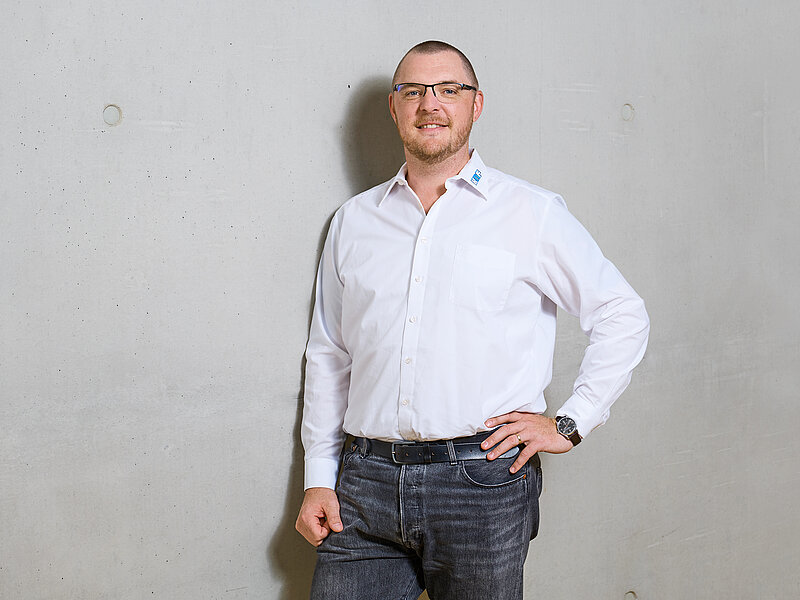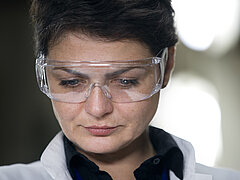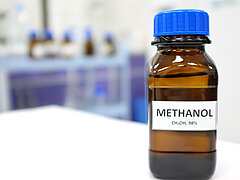KNF pumps on electrolyzer test stations make the production and quality of hydrogen reliable
Double Diaphragm Pumps for Hydrogen Technology
Technical subsystems play an important role in the hydrogen process chain. The company FEST uses KNF double diaphragm pumps for gas drying after electrolysis. One key reason is safety. However, there are even more reasons than that.
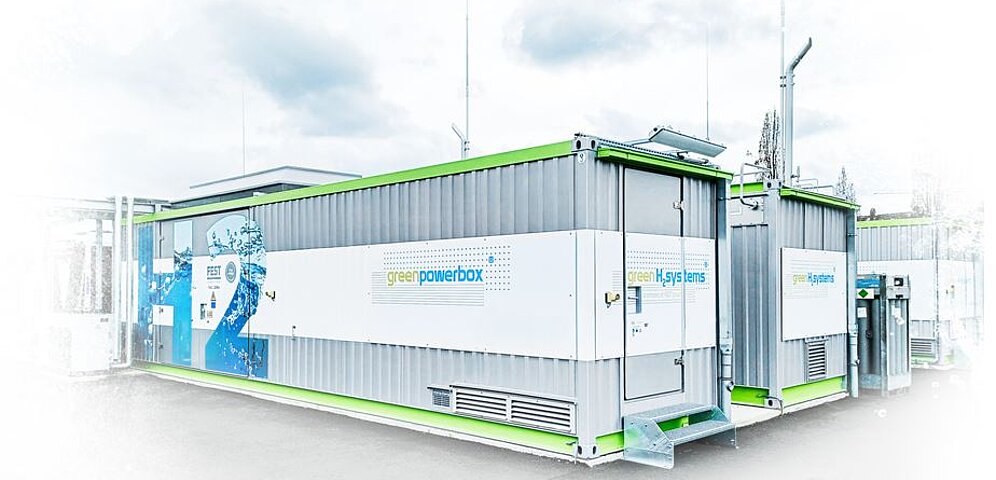
Double means twice as tight
Technical subsystems play an important role throughout the hydrogen process chain – from generation to conversion into electrical energy. The division for hydrogen technology at FEST uses KNF double diaphragm pumps for gas drying after electrolysis. One key reason is safety. However, there are even more reasons than that.
Hydrogen technology is making fast progress, driven by the commitment of many countries to decarbonize their energy industry. Companies across the entire value chain are working hard to lay the groundwork for the ramp-up of the hydrogen economy. FEST, with its hydrogen division Green H2 Systems, is one of the experienced companies already established in the international market.
Highly efficient PEM electrolyzers
The company builds turnkey systems, such as electrolyzers for feeding hydrogen into local supply grids, or for the on-site supply of hydrogen filling stations. In addition to an electrolyzer, complete systems may include compression and filling technology. Electrolysis systems are installed in containers that are placed at the designated location and connected to the energy supply and subordinate gas systems.
The systems are modular and scalable, covering a wide range of performance. The most powerful version of the cascadable PEM electrolysis systems currently available provide up to 600 Nm3/h hydrogen, and the next generation will provide up to 1,000 Nm3/h. PEM refers to the part of the electrolyzer where the reaction actually takes place: the proton-exchange membrane. This method achieves high current densities and efficiencies with a relatively simple design, which is one of the reasons it is considered to be very technically advanced.
Pure gas through adsorption
The product coming from the electrolyzer cannot necessarily be used directly. The relevant standard, EN 17124, defines quality levels and limits for by-products and contaminations, which can be tolerated or must be removed, depending on the use case. Fuel cells in vehicles require hydrogen 5.0 – which is not a term used in the aforementioned standard, but an established industrial standard that indicates 99.999 percent purity.
One of the substances that must be removed from the gas to prevent damage to the fuel cells is water. Adsorption can be used to separate water from the gas stream with a manageable amount of effort. FEST also uses adsorbers and has integrated a regeneration cycle into the process flow, in which previously dried gas is pumped through a closed circuit until the desired desorption level is achieved.
Pumps for hydrogen technology
The plant manufacturer has chosen diaphragm pump specialist KNF as its technology partner for electrolyzers. KNF pumps are used worldwide in fuel cells and electrolyzers to compress, transfer and dose oxygen or cathode air, methanol and methanol-water solutions, to recirculate hydrogen, to circulate electrolytes or to clean and dry gas.
KNF provides N 1400 double diaphragm pumps with an output of 250 Nl/min at 3 bar rel for the regeneration cycle. The pump head and valves are made of stainless steel, the diaphragms of EPDM. These materials have been selected because they are resistant to hydrogen embrittlement, making them reliable standard materials in hydrogen technology.
The most interesting detail of the pump, however, is the double diaphragm design principle that KNF has developed for pumps with special safety requirements. The initial problem: When a working diaphragm is damaged, gas should not be allowed to escape from the pump, above all because this could pose a risk to the environment and occupational health and safety, but also in order to avoid loss of valuable gases. With 6 x 10-6 mbar l/s, the N 1400 has a very high standard gas tightness, which is partly owed to the design of the diaphragm pump, which does not require any dynamic seals.
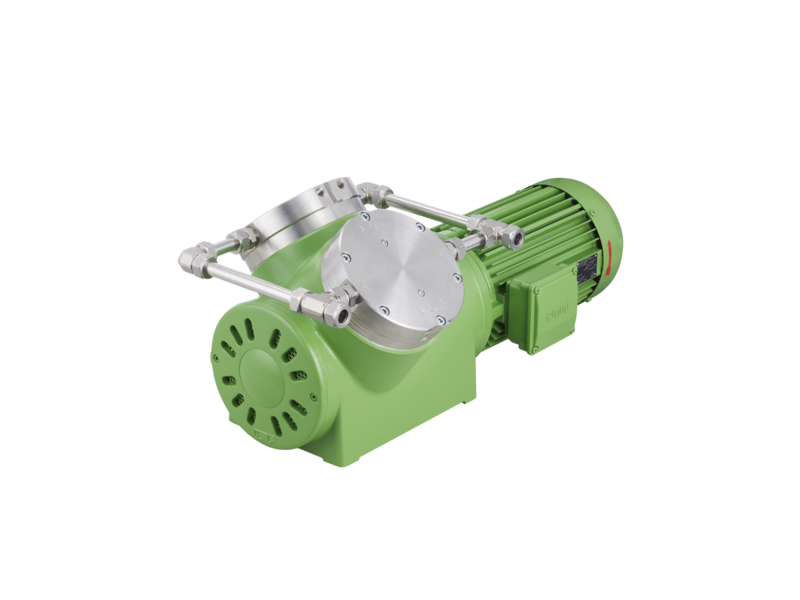
Increased safety thanks to leak detection
The second diaphragm, which is located underneath the working diaphragm, provides a secondary seal for the pump’s working chamber towards the pump housing and the environment. This diaphragm is also in motion, but the load is much lower. This extends the service life of the diaphragm compared to the working diaphragm, making simultaneous failure unlikely.
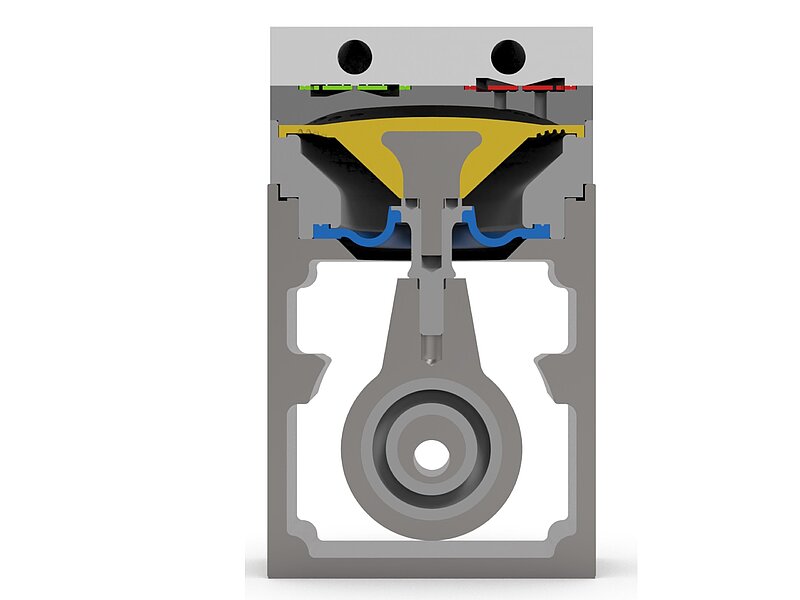
There is a clearance between the working and the safety diaphragm that is monitored by a pressure sensor via a housing bore. FEST uses a high-resolution sensor to monitor the space. Irregularities in the pressure profile can be an indicator of damage to the working diaphragm. As opposed to gas analytical monitoring, FEST takes advantage of a simpler system set-up with fewer components.
The pump is driven by a controllable 3-phase motor with low energy consumption. Even in continuous operation, its power consumption would hardly affect the energy balance of the system as a whole. Although the regeneration cycle usually runs for several days at a time, once desorption is complete, there is a long downtime.
A high level of safety, long service life and low maintenance with on-site replacement of wearing parts by the customer’s maintenance staff, plus low operating costs: These are the key benefits of the double diaphragm pump.
